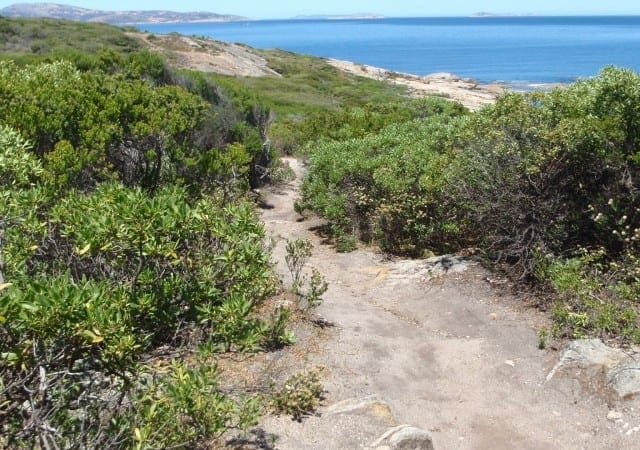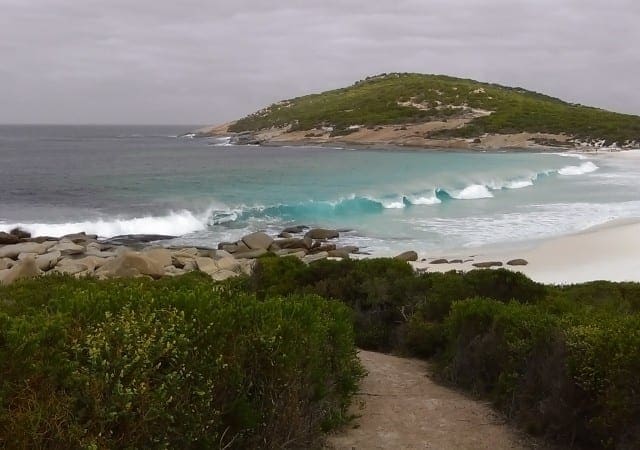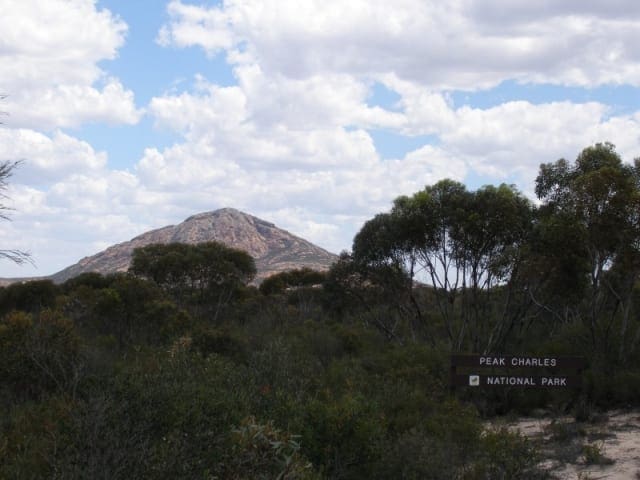Hike at a Glance
Max elevation: 135m
Min elevation: 0m
Total Ascent: 663m
Hike overview
Cape Le Grand National Park boasts some of Western Australia's most stunning coastal scenery. And the best way to experience it all? The famed 20-kilometer Cape Le Grand Coastal Trail. This one-way hike isn't just a walk; it's an immersive journey through a paradise of white-sand beaches, turquoise bays, and rugged granite headlands.
Imagine this: kangaroos lazing on pristine beaches, playful dolphins dancing in the waves, and breathtaking views that stretch as far as the eye can see. The Coastal Trail offers a multi-sensory experience that will leave you breathless. While Margaret River might rival its beauty, Cape Le Grand offers a unique charm.
The trail can be completed in a single day for experienced hikers, but why rush? Consider camping overnight at Lucky Bay, soaking up the tranquility and allowing ample time to truly appreciate the scenery. This isn't a race, it's a chance to reconnect with nature.
Exploring the trail sections
The Coastal Trail is a spectacular 20-kilometer journey divided into several distinct sections, each offering its own unique character:
Rossiter Bay to Lucky Bay: The trail begins at Rossiter Bay, a long stretch of pristine white sand. Hike over a ridge and be rewarded with panoramic views of Lucky Bay, its bright sand squeaking underfoot.
Lucky Bay to Thistle Cove: This section is considered the easiest, offering spectacular views in every direction, including the Recherche Archipelago. Take a break and soak it all in at the campsite nestled within Lucky Bay.
Thistle Cove to Hellfire Bay: The terrain changes to granite here, becoming slippery when wet. But the challenge is worth it, leading to the secluded beauty of Little Hellfire Bay, an invitation for a refreshing swim.
Hellfire Bay to Le Grand Beach: This section is the most demanding, with steep climbs and descents. However, the reward awaits: Le Grand Beach and another campsite.
While the entire trail can be completed in a single day (approximately 7 hours), a multi-day trek is highly recommended. The trail offers access points at various locations (Lucky Bay, Thistle Cove, Hellfire Bay) allowing you to break it down into shorter sections. The Cape Le Grand Coastal Trail is more than just a hike; it's an unforgettable adventure. Embrace the diverse landscapes, encounter unique wildlife, and create memories that will last a lifetime.
Gallery
Got some great shots from this hike? Upload your photos here to inspire others and show off the beauty of the trail!
Click to view form >>
Submitting your photos doesn’t mean you lose ownership. You can be credited for your contributions, and you can request removal at any time.
Content use
Please don’t copy GPX files or content from this site to AllTrails or other platforms. Each trail has been personally mapped, documented, and refined to support Australia’s bushwalking and hiking community. While some details come from land managers, every listing reflects significant personal effort. This is a free, community-driven initiative—your respect helps keep it that way.
Walk map and GPX file
Max elevation: 135 m
Min elevation: 0 m
Total climbing: 663 m
Total descent: -651 m
Getting there
Getting to the trailhead: Cape Le Grand National Park.
The starting point is Rossiter Beach, about a 30-minute drive southeast of Esperance.
Closest towns to this walk: Balladonia, Condingup, Esperance, Gibson, Salmon Gums, Salmon Gums Balladonia
About the region
Cape Le Grand National Park, a jewel near Esperance, Western Australia, stuns visitors with its diverse landscapes and idyllic beauty. This park, recently voted 8th place in Tripadvisor's 2022 Traveller's Choice Awards for Top 10 South Pacific Beaches, showcases the best of Western Australia's natural wonders.
Imagine pristine white sand beaches lapped by turquoise waters, a sight straight out of a postcard. Lucky Bay, famous for its resident colony of sunbathing kangaroos, is just one of the park's many idyllic coves. Here, you can set up camp under a canopy of stars, have a picnic with a breathtaking ocean view, or simply relax on the warm sand.
The park's beauty extends beyond the coastline. Rugged granite outcrops rise dramatically from the landscape, contrasting with freshwater pools and wildflower meadows teeming with color in spring. Hike or bike along the network of trails, traversing the park's diverse terrain and soaking in the panoramic views. For the adventurous, rock climbing opportunities await at Frenchman Peak and Mount Le Grand.
Cape Le Grand caters to all interests. Swim, surf, fish, or boat in the crystal-clear waters. Explore the park's wild reaches on the Le Grand Coastal Trail, a network connecting the most spectacular coastal sections. Feeling ambitious? Take the challenging hike to the 262-meter summit of Frenchman Peak and be rewarded with breathtaking views encompassing the park and the Recherche Archipelago islands.
Whether you seek relaxation on pristine beaches, exploration of diverse landscapes, or an adrenaline rush with hiking and rock climbing, Cape Le Grand National Park has something for everyone.
Similar walks nearby
Looking for more walks in or near Cape Le Grand National Park? Try these trails with a similar difficulty grade.
Track grade
Grade 4 (Hard) - Challenging Walks for Experienced Walkers: Grade 4 on the AWTGS signifies challenging walking tracks. Bushwalking experience is recommended for these tracks, which may be long, rough, and very steep. Directional signage may be limited, requiring a good sense of navigation. These walks are suited for experienced walkers who are comfortable with steeper inclines, rougher terrain, and potentially longer distances.
Explore safe
Plan ahead and hike safely! Carry enough water, pack layers for changing conditions, and bring safety gear like a torch, PLB, and reliable communication device. Check official sources for trail updates, closures, and access requirements, and review local weather and bushfire advice. Most importantly, share your plans with someone before you go. Being prepared makes for a safer and more enjoyable hike! Stay Safe, Explore More, and Always #ExploreSafe.
Packing checklists
What you carry in your pack depends on factors like weather, terrain, and your adventure type. Not sure what to bring? My free planning, food, and packing checklists are a great starting point, covering day hikes, overnight trips, and multi-day adventures. Use them to customise your kit and always prioritise safety.
Let someone know
Before heading out, take a moment to fill out your trip intentions form. It’s a quick way to share your hike details with family or friends. If something goes wrong, they can notify emergency services, ensuring a faster response and peace of mind. Stay safe and enjoy your adventure
Suggest an edit
Spotted a change on this trail? Maybe there are new features, the route has shifted, or the trail is permanently closed. Whatever the update, I’d love your input. Your feedback helps fellow hikers stay informed and ensures that our trail info stays fresh and reliable.
Acknowledgement of Country
Trail Hiking Australia acknowledges the Traditional Owners of the lands on which we hike and pay respects to their Elders, past and present, and we acknowledge the First Nations people of other communities who may be here today.






